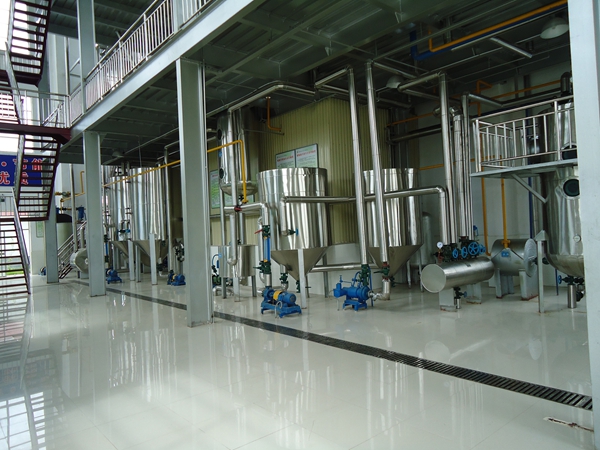Development of edible oil refining technology:

1. Degumming and neutralization
Reasonable degumming operation will help ensure the quality of refined oil. There are many degumming methods. The traditional methods include hydration degumming and acid refining degumming. According to the national standard of secondary oil, hydration and degumming can also meet the requirements. For palm oil and other special oils with less gum content, only acid refining degumming can meet the requirements. This method is also called dry degumming.
With the development of science and technology, people's goals are not only limited to how to remove the gum reasonably. But under this premise, the high goal is to reduce consumption and reduce the damage to grease during the degumming process. The degumming process used in production in the 1980s has been widely used because it is clean and can reduce the amount of clay used in the subsequent decolorization process. The enzymatic degumming process used in industrial production in the 1990s organically combined biochemistry and oil refining. After degumming, the phosphorus content can be reduced to less than 10 mg/kg, which is widely applicable to chemical refining and physical refining. The above processes have been applied in China.
2. Decolorization
The improved two-layer or multi-layer decolorizer can avoid the sedimentation of the clay and make the oil and clay more evenly mixed. The designed decolorizer with nozzle device can remove the oxygen and moisture in the undecolorized oil and accelerate the clay. The decolorization efficiency.
In the early days, white clay was usually added to the decoloring tank by direct inhalation. After improvement, the white clay was initially added to the white clay mixing tank through a quantitative auger under normal pressure, and then sucked into the decolorizing tank. But no matter which method, the contact of oil and air cannot be avoided. At present, the commonly used method is to transport the clay to the clay storage tank through the air transport system, and then automatically fall into the decolorization tank through a pneumatic butterfly valve controlled by a timer. This can not only reduce the dust pollution of the white clay in the transportation process, but also avoid the contact of oil and air.
3. Deodorization
Deodorization is an important process in oil refining. Different types of deodorization towers have different consumption of water, electricity, steam and other major indicators due to the height of the material layer and the contact area between oil and direct steam. In addition to the deodorization temperature and vacuum degree, the amount of direct steam added should be adjusted according to the actual needs through the size of the orifice plate aperture, and the pressure of the direct steam should be controlled at about 0.2 MPa.
Our country's edible oil refining, especially full continuous refining, has been close to the world's excellent level after nearly 20 years of development. Strengthening the statistics and control of main consumption indicators in the production process, and innovating technology, Henan Zhongxing will take a more solid step on the road of oil equipment development.
Copyright © Henan Zhongxing Grain And Oil Machinery Co.,Ltd. All Rights Reserved. Powered by MetInfo